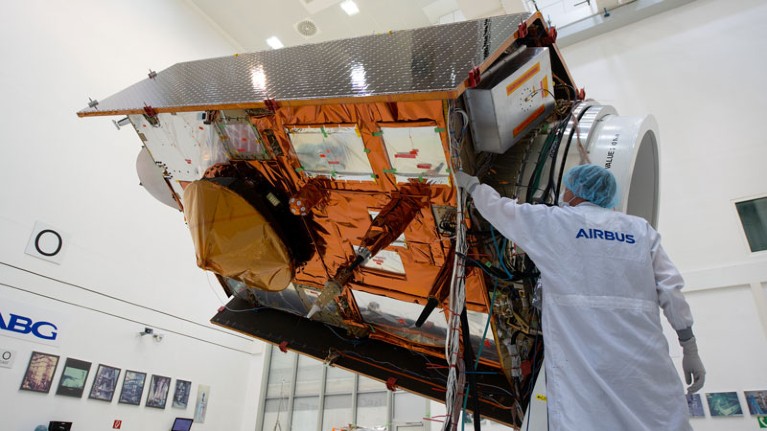Hello Nature readers, would you like to get this Briefing in your inbox free every day? Sign up here

The Copernicus Sentinel-6 satellite undergoing tests near Munich, Germany. Credit: S. Corvaja/ESA
ESA windfall will fast-track space missions
The European Space Agency (ESA) will get €12.5 billion (US$13.8 billion) in 2020–22, compared with €8.6 billion approved in 2016. The increase means the agency can boost the capabilities of its Earth-observing Copernicus satellites, bring forward its space-based gravitational-wave detector, LISA, and press ahead with a space clean-up project. Member states also pledged a 10% hike for ESA’s basic-science projects, the biggest rise in 25 years.
Targeted stem-cell attack could make transplants safer
Scientists are experimenting with ways to selectively target defective blood-making stem cells for destruction, clearing the way for a transplant of healthy stem cells without wiping out other important cells in the bone marrow. Early studies in animals and people use antibodies to kill the unwanted cells outright or make the cells vulnerable to attack by the body’s own immune system. The technique shows promise for fighting blood cancer as well as genetic and autoimmune diseases.
How to take a whale’s pulse
Researchers have measured the heart rate of a blue whale for the first time. They discovered that the whale’s pulse varies across a huge range that would kill another animal: from 2 beats per minute while diving to 37 beats per minute on surfacing — as fast as the huge heart can possibly beat. But suction-cupping a heart-rate monitor to a wild blue whale wasn’t easy, as marine biologist David Cade tells CBC Radio in a rousing interview.
CBC Radio | 4 min read or 9 min listen
Features & opinion
Get on track with genomic data visualizations
A growing collection of free and open-source tools help with combining and visualizing genomic data. Discover which is the best for you, whether you’re communicating with a collaborator or disseminating data to the broader scientific community.
Pipelines for peace
A new book by political scientist Thane Gustafson argues that the natural-gas pipelines between Russia and Europe are a force for remarkably stable economic interdependence, and that they transcend ideological and geopolitical differences. The book offers a readable, intelligent, even-handed historical interpretation of East–West natural-gas relations, says reviewer Andrew Moravcsik.
‘It took virologists totally off guard’
For World AIDS Day yesterday, authors of five seminal HIV/AIDS papers from the past 30 years tell the story of what happened next. “It brought out the worst and the best in people,” writes Simon Wain-Hobson, whose group published the first sequence of the virus and showed that it has simian origins. “It showed us just how little we knew.”
